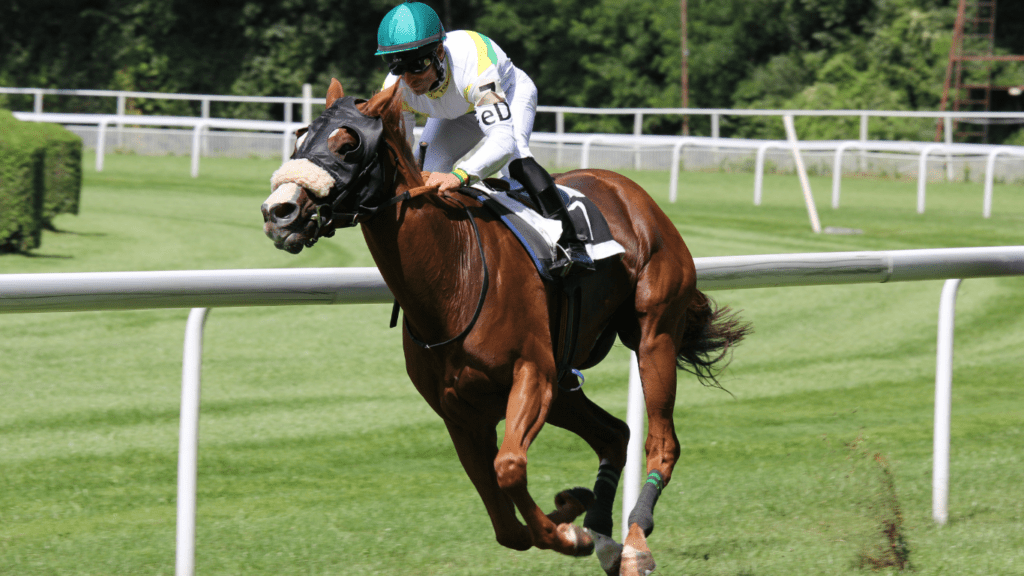What Are Horse Racing Odds?
Horse racing odds represent the likelihood of a horse winning a race. Different formats convey these odds, including fractional, decimal, and moneyline forms. Bookmakers, who compile these odds, analyze factors such as a horse’s past performance, jockey statistics, and track conditions.
Fractional odds, common in the UK, display the potential profit relative to the stake. For instance, 5/1 means a $1 bet returns $5 profit plus the original stake. Decimal odds, more prevalent in Europe and Australia, simplify calculations. A 6.00 decimal odds value indicates a $1 bet would return $6, including the stake. Moneyline odds, favored in the US, present odds as either a positive or negative number. Positive +500 means a $100 bet yields $500 profit, whereas negative -200 implies a $200 bet returns $100 profit.
Odds fluctuate based on betting patterns and new information such as injuries. Bookmakers adjust odds to balance their books and manage risk. Understanding these odds helps bettors gauge the potential return on their wagers.
Types Of Horse Racing Odds
Understanding the types of horse racing odds is crucial for making informed bets. These odds come in three main formats: fractional, decimal, and moneyline.
- Fractional Odds
Fractional odds are common in the UK and Ireland. They show the ratio of the profit to the stake. For example, 5/1 means you gain $5 for every $1 wagered. When odds are 5/1 and you bet $10, your profit is $50 and the total return, including the stake, is $60.
- Decimal Odds
Decimal odds are popular in Europe, Canada, and Australia. They represent the total payout rather than just the profit. A 5.00 decimal odd indicates the total return on a $1 bet is $5. When betting $10 on a 5.00 odd, your total return is $50, incorporating both the profit and the stake.
- Moneyline Odds
Moneyline odds are prevalent in the US. These odds show how much profit a $100 bet yields (+) or how much must be wagered to win $100 (-). When odds are +500, a $100 bet results in a $500 profit. Conversely, -200 odds mean you need to bet $200 to win $100.
How To Read Horse Racing Odds

Reading horse racing odds can seem tricky at first, but it becomes straightforward with a bit of practice. Understanding these odds helps in making informed bets and enhances the overall experience.
Interpreting The Numbers
Odds represent the likelihood of a horse winning, expressed in different formats like fractional, decimal, and moneyline. Fractional odds (e.g., 5/1) denote the profit relative to the stake. Decimal odds (e.g., 5.00) show the total payout including the stake. Moneyline odds (e.g., +500) indicate the profit on a $100 bet (+) or the stake required to win $100 (-). By knowing these formats, I can better assess the risks and potential rewards of my bets.
Calculating Potential Payouts
To calculate potential payouts, use the format-specific method. For fractional odds, multiply the stake by the numerator, then divide by the denominator, and add the stake back. Example: 5/1 odds with a $10 bet yield $60 ($50 profit + $10 stake). For decimal odds, multiply the stake by the decimal number.
Example: 5.00 odds with a $10 bet return $50. For moneyline odds, divide the odds by 100 and multiply by the stake for positive odds, or divide 100 by the odds and multiply by the stake for negative odds. Example: +500 odds with a $10 bet yield $60; -200 odds with a $10 bet return $15. By using these calculations, I can determine potential returns and make strategic bets.
Where To Find Horse Racing Odds
Finding horse racing odds is straightforward once you know where to look. Reliable sources simplify the process and ensure you have up-to-date information.
Online Platforms
I often go online to find horse racing odds. Websites like:
- Bet365
- William Hill
- TwinSpires
offer extensive odds listings. These platforms update odds in real-time, reflecting the latest market movements. Many of these sites also provide expert analysis and predictions, helping bettors make informed decisions. Most online platforms also feature mobile apps, making it convenient to check odds on the go.
Betting Shops
Betting shops are another excellent source for horse racing odds. Major chains like Ladbrokes and Coral have numerous locations, especially in the UK. These shops display odds on large boards, updated frequently to match the current betting market.
I find that staff in betting shops can offer valuable insights and answer any questions about specific races or odds. Visiting a betting shop also provides a tangible, social experience that online platforms can’t replicate.
This direct access to odds, whether online or in-person, greatly enhances the betting experience by providing real-time, accurate information.
Tips For Beginners
Navigating horse racing odds can be challenging, but with the right approach, it becomes manageable and even enjoyable. Here, I’ve shared a few key tips to get you started confidently.
Research And Analysis
Thorough research is crucial in horse racing. Start by studying past performances of horses, jockeys, and trainers. Look for patterns in the horse’s performance on different tracks and under varying weather conditions. Websites like Racing Post and Equibase provide comprehensive databases filled with historical data. Analyzing this data helps identify potential winners and increases your betting accuracy.
Managing Your Bankroll
Effective bankroll management ensures long-term participation in horse racing. Set aside a specific amount for betting, and never exceed this limit. For example, allocate 5% of your bankroll per bet to minimize risks. Regularly review your strategy and adjust based on your results. Utilizing this disciplined approach safeguards your finances and enhances your betting experience.
Common Mistakes To Avoid
When diving into horse racing, beginners often make certain avoidable errors. Understanding these common pitfalls helps enhance success and enjoyment in the sport.
Ignoring Value Bets
Overlooking value bets is a frequent mistake. Value bets refer to wagers where the odds offered by the bookmaker are higher than the horse’s true chances of winning. For instance, if a horse has a 25% chance of winning, anything above 3.00 in decimal odds would be a value bet. Identifying such opportunities can significantly boost profits over time.
Betting On Every Race
Betting on every race is another common blunder. It’s tempting to bet on multiple races, but it diminishes strategic advantage. Focusing on select races, where thorough research has been conducted, yields better results. Instead of spreading money thin, placing informed bets on a few well-analyzed races often increases the chances of success.


 Danny Stark brought technical expertise to the forefront by designing and optimizing the platform’s architecture to ensure smooth performance. From streamlining user interfaces to implementing responsive features, Danny focused on delivering a fast and seamless experience for visitors across all devices. His work behind the scenes ensured Bet Roll Gamble operates efficiently under high traffic, providing users with uninterrupted access to content and tools.
Danny Stark brought technical expertise to the forefront by designing and optimizing the platform’s architecture to ensure smooth performance. From streamlining user interfaces to implementing responsive features, Danny focused on delivering a fast and seamless experience for visitors across all devices. His work behind the scenes ensured Bet Roll Gamble operates efficiently under high traffic, providing users with uninterrupted access to content and tools.